

More than half of employees suffer from musculoskeletal conditions that cause pain, impair their functioning, and substantially decrease their productivity at work — and these conditions are on the rise.1 A 2020 survey found that more than 40% of employees developed new or worsened musculoskeletal disorders when they began working from home at the beginning of the pandemic.2
In the next decade, spine disorders alone are projected to increase by 26% — and in the next 20 years, arthritis prevalence is projected to increase by 38%, while osteoporosis is projected to grow by 33%.3
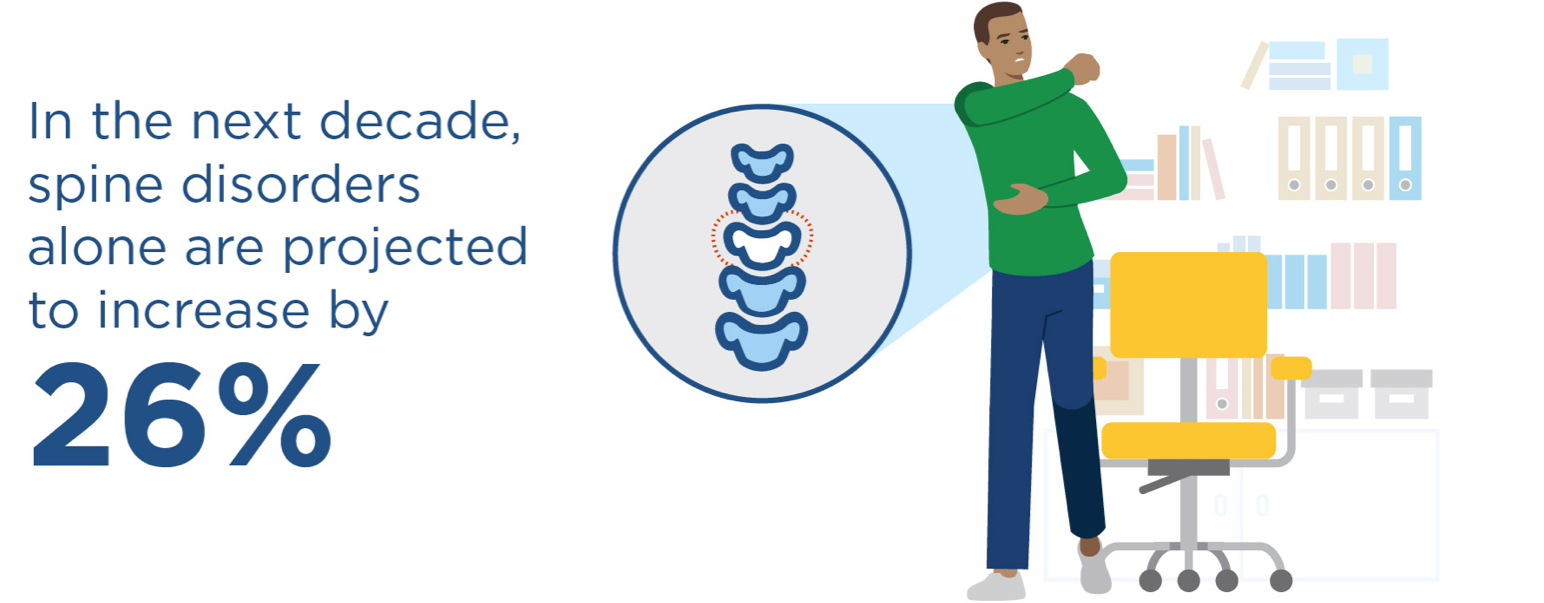
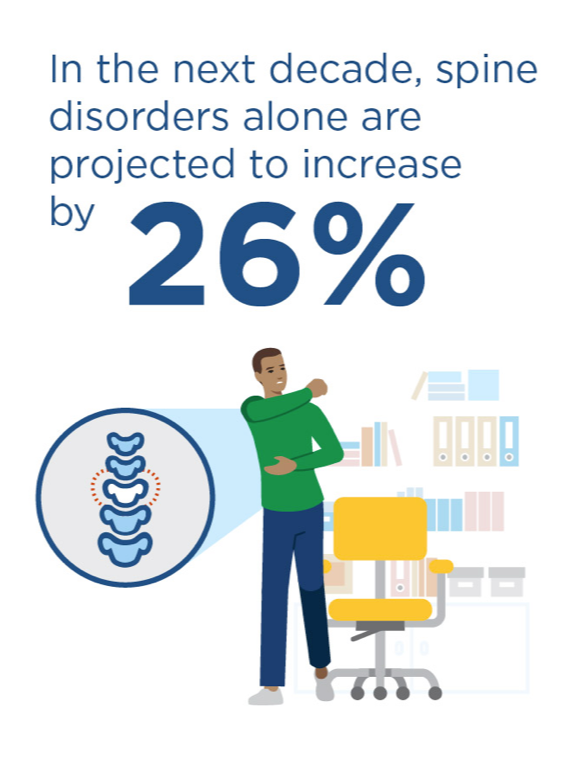
Whether working remotely or in person, employers should be aware of employee environments and how they can support the creation of a safe work environment.
As workplaces continue to evolve, it’s especially important to ensure that telecommuting employees have an ergonomic workspace. When remote workers don’t have the ergonomic support they need, the impact on a company’s bottom line can be significant.
What are musculoskeletal conditions?
Musculoskeletal conditions affect bones, joints, muscles, and connective tissue. Symptoms include pain and limited mobility, dexterity, and overall functioning.
Some of the most common conditions include:
- Arthritis
- Back, neck, and shoulder pain
- Carpal tunnel syndrome
- Sprains, strains, and tears
- Tendonitis
How do musculoskeletal conditions occur?
Musculoskeletal conditions are caused by overexertion, repetitive motion, or bodily reaction — for example, bending or twisting. Work-related musculoskeletal disorders can occur due to routine lifting of heavy objects, daily exposure to whole-body vibration, routine overhead work, repetitive forceful tasks, and more.
These conditions can also occur when remote employees create makeshift workstations that are not ergonomically designed. Consider how your employees may be sitting in awkward positions for 40 hours or more a week on their couch or dining table — leading to increased stress on the upper back and neck.
It’s important to note that disorders caused by trips, falls, and similar incidents are not classified as musculoskeletal disorders.
The impact of musculoskeletal conditions on your workforce
Musculoskeletal conditions are a leading workforce health problem, with 85% of employers ranking it in the top three health conditions impacting their costs.4 Over 50% of employees are dealing with musculoskeletal conditions that cause pain and impair their productivity, which leads to an overage of 12 missed workdays a year.5

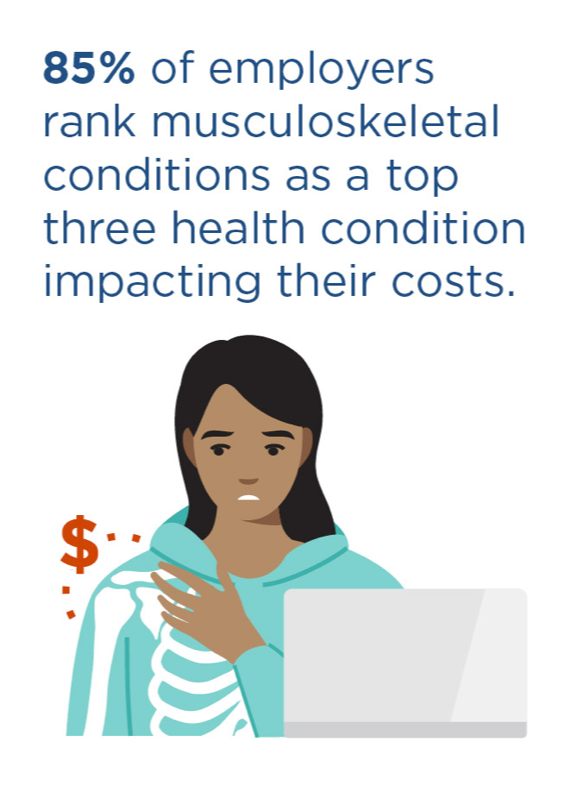
Musculoskeletal conditions are also the reason for nearly 20% of all doctor appointments and cost $980 billion in health care costs and lost wages per year.6 Musculoskeletal conditions can lead to chronic pain, which is defined as pain that persists for more than three months. Chronic pain is linked with increased absences, decreased job performance, concentration problems, and physical limitations — and up to 40% of American workers experience chronic pain, which exceeds the number of people with cancer, diabetes, and heart disease combined.7
How employers can help employees prevent and alleviate musculoskeletal conditions
As a business leader there are several ways you can support employee musculoskeletal health and create ergonomic workspaces.
For employees with desk jobs or those working remotely, you can:
- Offer ergonomic assessments, training, and needed equipment
 . external link
. external link - Encourage non-static positions
- Communicate the importance of taking regular breaks and stretching
- Provide financial assistance for remote employees to set up an ergonomic workstation. This should include a desk or table, adjustable chair with lumbar and arm support and an external monitor, mouse, and keyboard.
- Ensure employees understand the risks of working at workstations with poor ergonomics
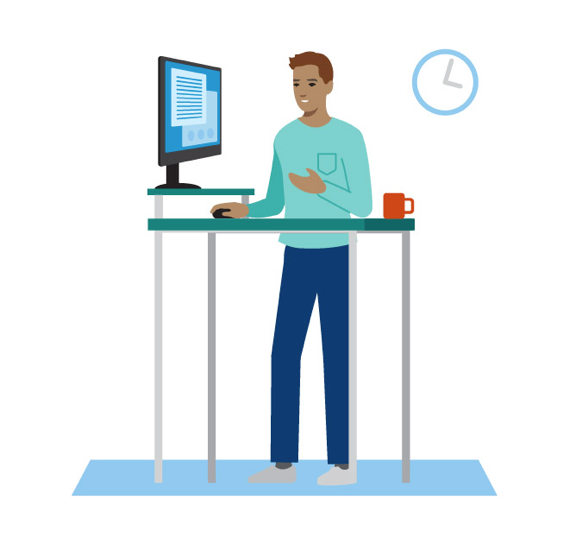
For employees with non-desk jobs, you can:
- Provide training on proper lifting techniques
 . external link
. external link - Make mechanical assist devices available when possible
- Offer height-adjustable workbenches
- Ensure tools and materials are within reaching distance
- Schedule more breaks to allow for rest and recovery
- Rotate workers through physically demanding jobs

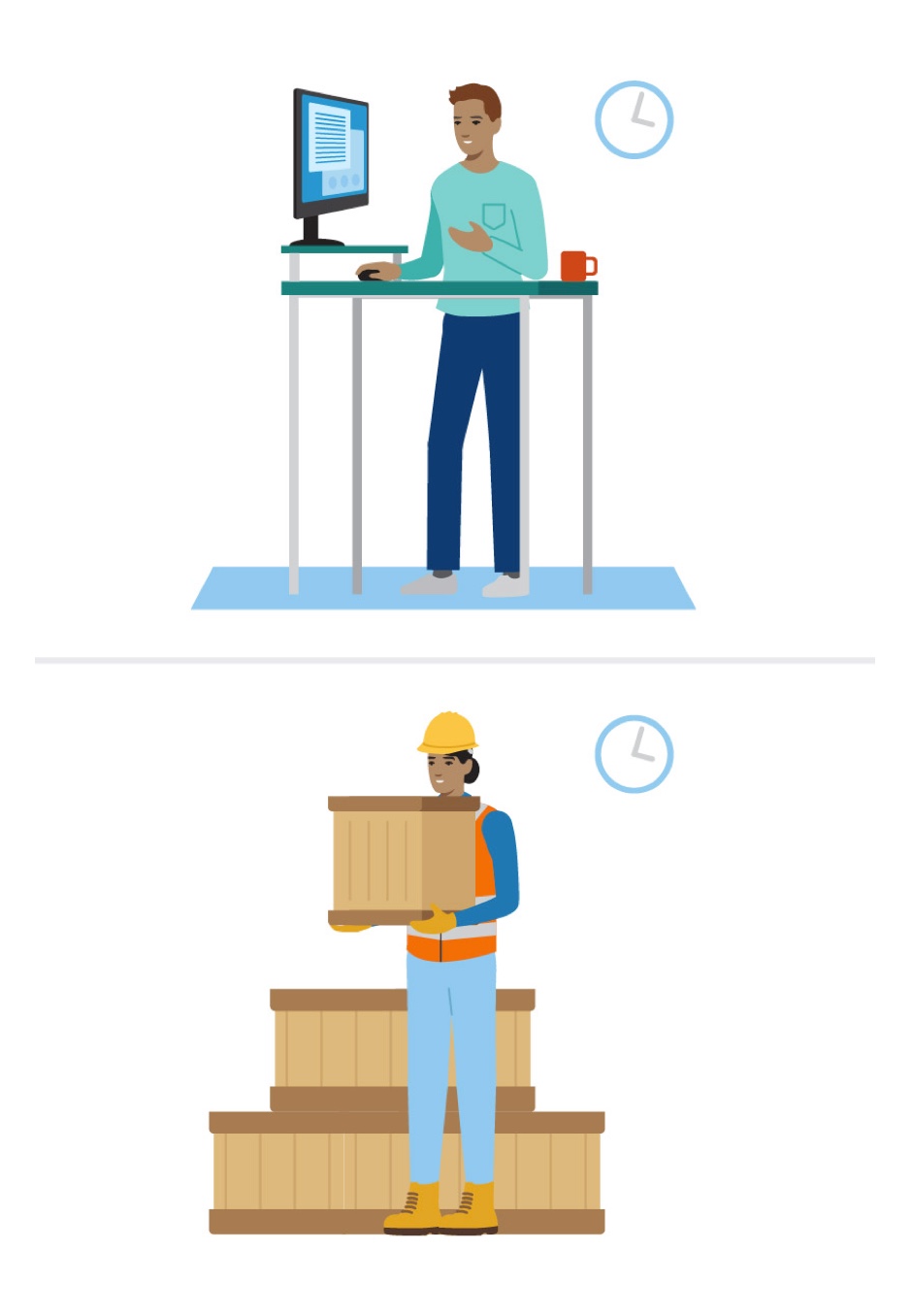
For all employees, you can:
- Provide time off for doctor visits to prevent these conditions from worsening
- Offer virtual physical therapy through your health plan to encourage workers to remain engaged with their care — without having to make the choice between prioritizing their work over their health.
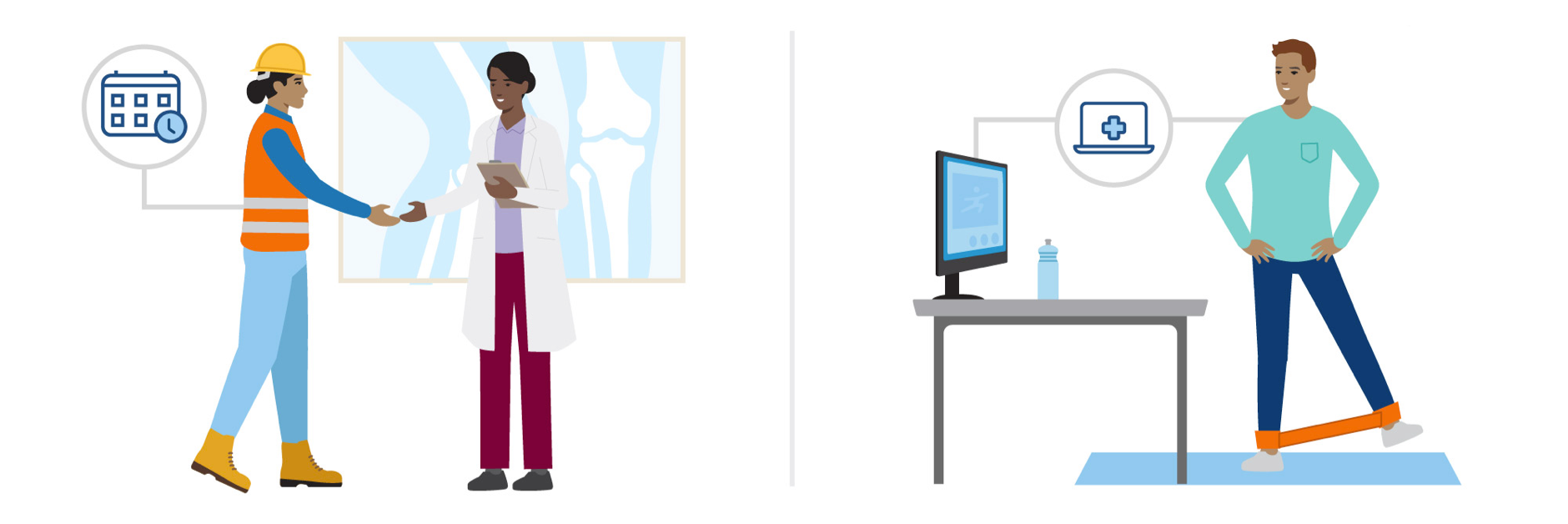
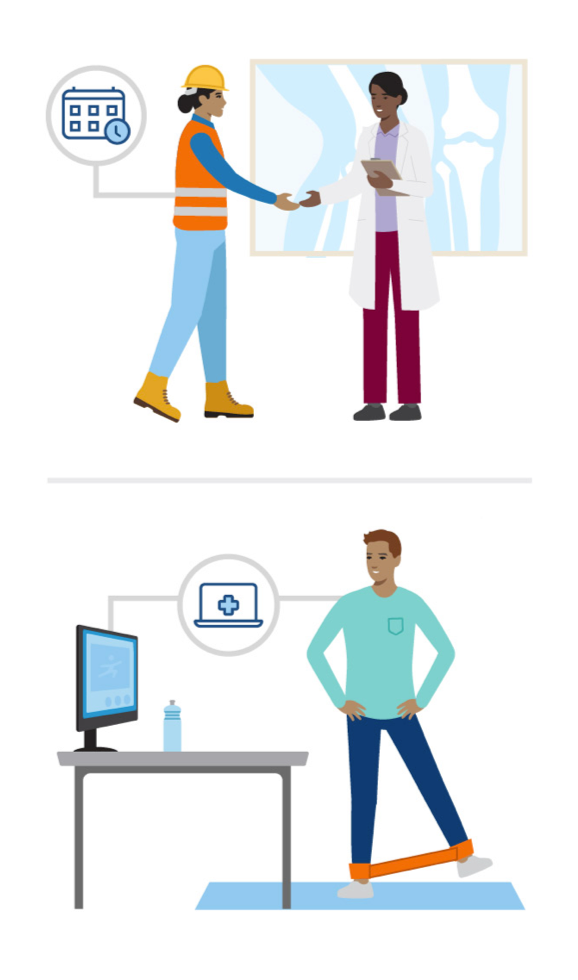
Why business leaders benefit from supporting employee musculoskeletal health
Musculoskeletal conditions can impact a large portion of your workforce, can be debilitating for employees, and can be costly for employers. Even when employees need care, they may underuse the resources made available to them due to inconvenience, costs, and the stress of missing work.
Ultimately, employers can help make it easier for employees to manage their current musculoskeletal conditions and prevent future ones from occurring by offering cost-effective and accessible care, and by offering ergonomic education and equipment. In doing so, employers help employees stay healthier and more engaged — improving employee retention while decreasing health care costs — and most importantly can improve employees’ lives with this added support.
Resources you may find helpful



- 1
“Fast Facts: Musculoskeletal Conditions,” United States Bone and Joint Initiative, 2018.
- 2
“Resilient, Committed, Engaged and Worried: The Experiences and Risks of Americans Working from Home During COVID–19,” Chubb, July 14, 2020.
- 3
Chantal S. Parenteau et al., “Prevalence of spine degeneration diagnosis by type, age, gender, and obesity using Medicare data,” Nature, March 8, 2021; Lauren Lawton, “2022 Musculoskeletal health trends,” Advisory Board, April 2022.
- 4
“Large Employers Double Down on Efforts to Stem Rising Benefit Costs which are Expected to Top $15000 per Employee in 2020,” National Business Group on Health, August 13, 2019.
- 5
See note 1.
- 6
See Note 3.
- 7
Duygu Biricik Gulseren et al., “When Someone on Your Team Has Chronic Pain,” Harvard Business Review, July 19, 2021.
Kaiser Permanente health plans around the country: Kaiser Foundation Health Plan, Inc., in Northern and Southern California and Hawaii • Kaiser Foundation Health Plan of Colorado • Kaiser Foundation Health Plan of Georgia, Inc., Nine Piedmont Center, 3495 Piedmont Road NE, Atlanta, GA 30305 • Kaiser Foundation Health Plan of the Mid-Atlantic States, Inc., in Maryland, Virginia, and Washington, D.C., 2101 E. Jefferson St., Rockville, MD 20852 • Kaiser Foundation Health Plan of the Northwest, 500 NE Multnomah St., Suite 100, Portland, OR 97232 • Kaiser Foundation Health Plan of Washington or Kaiser Foundation Health Plan of Washington Options, Inc., 1300 SW 27th St., Renton, WA 98057
Congratulations! You have successfully saved this item.
To access your Saved items any time, open the "Saved Items" folder in the top right corner of the page.
It seems that you do not have cookies enabled. Please enable cookies to make use of all of our site's functionality.
You haven't collected any items yet.
- Save Content
Click the "Save" icon next to the content you want to revisit later.
- Access Your Saved Items
Click on the "Saved Items" link at the top of the page or use the URL we create for you.
Be sure to copy and paste the URL we create for you before you leave the site.
1-5 of 14
Your Link
After leave the site, your saved items will be saved for you at this URL:
https://business.preview.dpaprod.kpwpce.kp-aws-cloud.org/saved-items?user=Share your list
Show Disclaimer +


